Post-Construction Defects in Multi-Unit Australian Dwellings: An Analysis of the Defect Type, Causes, Risks, and Impacts
Abstract
1. Introduction
- To review and classify the various types of defects observed in multi-unit Australian dwellings.
- To capture the residents’ perspective of defects in multi-unit Australian dwellings.
- To identify the causes and severity of defects in multi-unit Australian dwellings and evaluate their impacts on building residents.
2. Literature Review
2.1. Common Defect Types, Causes, and Contributing Factors
2.2. Recent Cases of Defective Multi-Unit Dwellings in Australia and Governments’ Response
3. Research Design and Methodology
3.1. Data Collection through the Online Questionnaire
- Residents of the selected buildings and not visitors or guests staying temporarily with the main residents.
- Well-versed in the English Language to apprehend the questionnaire.
- Sane adults of 18 years and above age.
- The lead researcher distributed the questionnaire online through the university data collection systems and in person. A list of emails was collected from the building service providers or directly from the residents. Data through the questionnaire were collected from 24 June to 30 September 2022.
3.2. Industry Professional Interviews
4. Results and Discussions
4.1. Results of Questionnaire-Based Data
4.2. Risk Analysis of Defects
4.3. Results of the Interviews
5. Conclusions
Author Contributions
Funding
Institutional Review Board Statement
Data Availability Statement
Acknowledgments
Conflicts of Interest
References
- Foster, S.; Hooper, P.; Easthope, H. Cracking up? Associations between building defects and mental health in new Australian apartment buildings. Cities Health 2022, 6, 1152–1163. [Google Scholar] [CrossRef]
- Shoory, M. The Growth of Apartment Construction in Australia, Bulletin—June 2016; Reserve Bank of Australia: Brisbane, Australia, 2016. Available online: https://www.rba.gov.au/publications/bulletin/2016/jun/pdf/bu-0616-3.pdf (accessed on 9 January 2024).
- Australian Bureau of Statistics. Telling Storeys—Apartment Building Heights; Australian Bureau of Statistics: Canberra, Australia, 2020. Available online: https://www.abs.gov.au/articles/telling-storeys-apartment-building-heights (accessed on 9 January 2024).
- Australian Bureau of Statistics. Australian National Accounts: National Income, Expenditure and Product; Australian Bureau of Statistics: Canberra, Australia, 2019.
- Paton-Cole, V.P.; Aibinu, A.A. Construction defects and disputes in low-rise residential buildings. J. Leg. Aff. Disput. Resolut. Eng. Constr. 2021, 13, 05020016. [Google Scholar] [CrossRef]
- Paton-Cole, V. Assessment of defects and disputes in residential buildings. In Proceedings of the 43rd Australasian Universities Building Education Association Conference, Built to Thrive: Creating Buildings and Cities that Support Individual Well-Being and Community Prosperity, RACV, Noosa, QLD, Australia, 6–8 November 2019; Zhao, X., Kalutara, P., Webber, R., Eds.; Central Queensland University: Norman Gardens, QLD, Australia, 2019; pp. 160–169. [Google Scholar]
- Hoffman, M.; Carter, J.; Foster, S. Opal Tower Investigation: Final Report; Department of Planning and Environment (NSW). UniSearch NSW Minister for Planning and Housing: Parramatta, NSW, Australia, 2019; Available online: https://apo.org.au/sites/default/files/resource-files/2019-02/apo-nid221431.pdf (accessed on 9 January 2024).
- McIlroy, J. Mascot Towers Debacle a Sign of Deep Housing Crisis. Green Left Wkly. 2019, p. 1226. Available online: https://www.greenleft.org.au/content/mascot-towers-debacle-sign-deep-housing-crisis (accessed on 9 January 2024).
- McKenna, S.T.; Jones, N.; Peck, G.; Dickens, K.; Pawelec, W.; Oradei, S.; Harris, S.; Stec, A.A.; Hull, T.R. Fire behaviour of modern façade materials–Understanding the Grenfell Tower fire. J. Hazard. Mater. 2019, 368, 115–123. [Google Scholar] [CrossRef] [PubMed]
- Crommelin, L.; Thompson, S.; Easthope, H.; Loosemore, M.; Yang, H.; Buckle, C.; Randolph, B. Cracks in the Compact City: Tackling Defects in Multi-Unit Strata Housing; City Futures Research Centre, UNSW: Sydney, Australia, 2021; Available online: https://apo.org.au/sites/default/files/resource-files/2021-10/apo-nid315107.pdf (accessed on 9 January 2024).
- Morrell, P. The Rise of Apartment Living: Why Australian Families Are Choosing Apartments. Available online: https://morrellproperty.com.au/the-rise-of-apartment-living-why-australian-families-are-choosing-apartments/ (accessed on 5 January 2024).
- Kohler, A. The Dirty Little Secret That Keeps Australian Housing Wildly Unaffordable. Available online: https://www.smh.com.au/national/the-dirty-little-secret-that-keeps-australian-housing-wildly-unaffordable-20231121-p5elo7.html (accessed on 5 January 2024).
- Ullah, F.; Sepasgozar, S.M.; Thaheem, M.J.; Wang, C.C.; Imran, M. It’s all about perceptions: A DEMATEL approach to exploring user perceptions of real estate online platforms. Ain Shams Eng. J. 2021, 12, 4297–4317. [Google Scholar] [CrossRef]
- Ahmed, S.I.N.; Pasquire, C.; Manu, E. Key factors affecting commercial actors in collaborative working within the UK construction industry. J. Financ. Manag. Prop. Constr. 2022, 27, 323–347. [Google Scholar] [CrossRef]
- Ullah, F.; Sepasgozar, S.M.; Shirowzhan, S.; Davis, S. Modelling users’ perception of the online real estate platforms in a digitally disruptive environment: An integrated KANO-SISQual approach. Telemat. Inform. 2021, 63, 101660. [Google Scholar] [CrossRef]
- Watt, D. Building Pathology: Introduction and Practice; Wiley-Blackwell: Hoboken, NJ, USA, 1999. [Google Scholar]
- Yacob, S.; Ali, A.S.; Au-Yong, C.P.; Yacob, S.; Ali, A.S.; Au-Yong, C.P. Factors Contributing to Building Defects. In Managing Building Deterioration: Prediction Model for Public Schools in Developing Countries; Springer: Berlin/Heidelberg, Germany, 2022; pp. 41–63. [Google Scholar]
- Australian Bureau of Statistics. Census of Population and Housing: Census Dictionary; Australian Bureau of Statistics: Canberra, Australia, 2016.
- Atkinson, A.R. The role of human error in construction defects. Struct. Surv. 1999, 17, 231–236. [Google Scholar] [CrossRef]
- Qin, H.; Stewart, M.G. Construction defects and wind fragility assessment for metal roof failure: A Bayesian approach. Reliab. Eng. Syst. Saf. 2020, 197, 106777. [Google Scholar] [CrossRef]
- Atkinson, A.R. The pathology of building defects: A human error approach. Eng. Constr. Archit. Manag. 2002, 9, 53–61. [Google Scholar] [CrossRef]
- Josephson, P.-E.; Hammarlund, Y. The causes and costs of defects in construction: A study of seven building projects. Autom. Constr. 1999, 8, 681–687. [Google Scholar] [CrossRef]
- Aljassmi, H.; Han, S.; Davis, S. Project pathogens network: New approach to analyzing construction-defects-generation mechanisms. J. Constr. Eng. Manag. 2014, 140, 04013028. [Google Scholar] [CrossRef]
- Johnston, N.; Reid, S. An Examination of Building Defects in Residential Multi-Owned Properties. Deakin Univeristy and Griffith Univeristy Australia. 2019. Available online: https://www.griffith.edu.au/data/assets/pdf_file/0022/831217/Examining-Building-Defects-Research-Report-S-Reid-N-Johnston.pdf (accessed on 9 January 2024).
- Judd, S.; Randolph, B.; Easthope, H. Governing the Compact City: The Role and Effectiveness of Strata Management; City Futures Research Centre, UNSW: Sydney, Australia, 2012. [Google Scholar]
- Georgiou, J.; Love, P.; Smith, J. A comparison of defects in houses constructed by owners and registered builders in the Australian State of Victoria. Struct. Surv. 1999, 17, 160–169. [Google Scholar] [CrossRef]
- Yoon, S.; Son, S.; Kim, S. Design, Construction, and curing integrated management of defects in finishing works of apartment buildings. Sustainability 2021, 13, 5382. [Google Scholar] [CrossRef]
- Jingmond, M.; Ågren, R. Unravelling causes of defects in construction. Constr. Innov. 2015, 15, 198–218. [Google Scholar] [CrossRef]
- Forcada, N.; Macarulla, M.; Fuertes, A.; Casals, M.; Gangolells, M.; Roca, X. Influence of building type on post-handover defects in housing. J. Perform. Constr. Facil. 2012, 26, 433–440. [Google Scholar] [CrossRef]
- Chong, W.-K.; Low, S.-P. Assessment of defects at construction and occupancy stages. J. Perform. Constr. Facil. 2005, 19, 283–289. [Google Scholar] [CrossRef]
- Chong, W.-K.; Low, S.-P. Latent building defects: Causes and design strategies to prevent them. J. Perform. Constr. Facil. 2006, 20, 213–221. [Google Scholar] [CrossRef]
- Zalejska Jonsson, A.; Hungria Gunnelin, R. Defects in newly constructed residential buildings: Owners’ perspective. Int. J. Build. Pathol. Adapt. 2019, 37, 163–185. [Google Scholar] [CrossRef]
- Porteous, W. Classifying building failure by cause: New approach to identifying the causes of building failure avoiding involvement with issues of blame. Build. Res. Inf. 1992, 20, 350–356. [Google Scholar] [CrossRef]
- Karim, K.; Marosszeky, M.; Davis, S. Managing subcontractor supply chain for quality in construction. Eng. Constr. Archit. Manag. 2006, 13, 27–42. [Google Scholar] [CrossRef]
- Aljassmi, H.; Han, S.; Davis, S. Analysis of the complex mechanisms of defect generation in construction projects. J. Constr. Eng. Manag. 2016, 142, 04015063. [Google Scholar] [CrossRef]
- Economics References Committees—Society for Ecological Restoration. Non-Conforming Building Products-Interim Report: Aluminium Composite Cladding; Parliament of Australia: Canberra, Australia, 2017. Available online: https://www.aph.gov.au/Parliamentary_Business/Committees/Senate/Economics/Non-conforming45th/~/media/Committees/economics_ctte/Non-conforming45th/Interim_report_cladding/report.pdf (accessed on 9 January 2024).
- Victorian Cladding Taskforce. Victorian Cladding Taskforce: Interim Report; Department of Environment, Land, Water and Planning: Melbourne, Australia, 2017.
- Consumer, Building and Occupational Services (CBOS). Tasmanian Aluminum Composite Panel Audit Summary; Tasnmanian Government: Hobart, Australia, 2018.
- Queensland Government. Queensland Non-Conforming Building Products Audit Taskforce; Queensland Government: Brisbane, Australia, 2018.
- Shergold, P.; Weir, B. Building Confidence: Improving the Effectiveness of Compliance and Enforcement Systems for the Building and Construction Industry across Australia. 2018. Available online: https://apo.org.au/sites/default/files/resource-files/2018-02/apo-nid314175.pdf (accessed on 9 January 2024).
- Government of New South Wales. Research Report on Serious Defects in Recently Completed Strata Buildings across New South Wales September 2021; Office of the New South Wales Building Commissioner, Strata Community Association (NSW): Sydney, Australia, 2021. Available online: https://apo.org.au/sites/default/files/resource-files/2021-12/apo-nid315099.pdf (accessed on 9 January 2024).
- Construction, Forestry, Maritime, Mining, and Energy Union (CFMEU). Shaky Foundations—The National Crisis in Contruction; Construction, Forestry, Maritime, Mining, and Energy Union (CFMEU): Canberra, Australia, 2019. [Google Scholar]
- Mintzberg, H. An emerging strategy of ”direct” research. Adm. Sci. Q. 1979, 24, 582–589. [Google Scholar] [CrossRef]
- Shah, S.K.; Corley, K.G. Building better theory by bridging the quantitative–qualitative divide. J. Manag. Stud. 2006, 43, 1821–1835. [Google Scholar] [CrossRef]
- Reich, B.H.; Wee, S.Y. Searching for Knowledge in the PMBOK® Guide. Proj. Manag. J. 2006, 37, 11–26. [Google Scholar] [CrossRef]
- Ullah, F.; Qayyum, S.; Thaheem, M.J.; Al-Turjman, F.; Sepasgozar, S.M. Risk management in sustainable smart cities governance: A TOE framework. Technol. Forecast. Soc. Change 2021, 167, 120743. [Google Scholar] [CrossRef]
- Brisbane Development. Interactive Brisbane Map. Available online: https://brisbanedevelopment.com/brisbane-development-map/ (accessed on 9 January 2024).
- Bickman, L.; Rog, D.J. The SAGE Handbook of Applied Social Research Methods; Sage Publications: Thousand Oaks, CA, USA, 2008. [Google Scholar]
- Dillman, D.A. Mail and Internet Surveys: The Tailored Design Method—2007 Update with New Internet, Visual, and Mixed-Mode Guide; John Wiley & Sons: Hoboken, NJ, USA, 2011. [Google Scholar]
- Grembowski, D. The Practice of Health Program Evaluation; Sage Publications: Thousand Oaks, CA, USA, 2015. [Google Scholar]
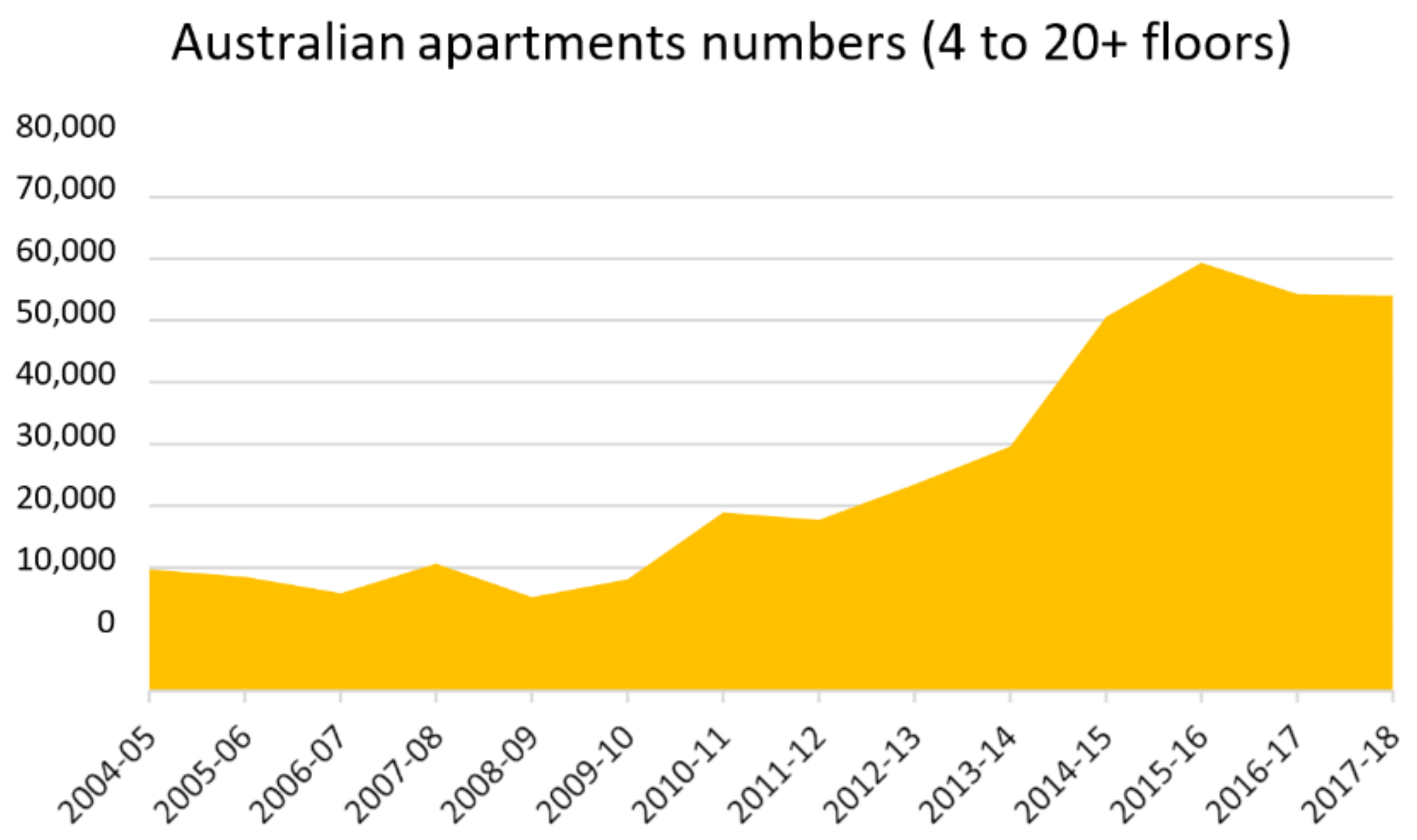

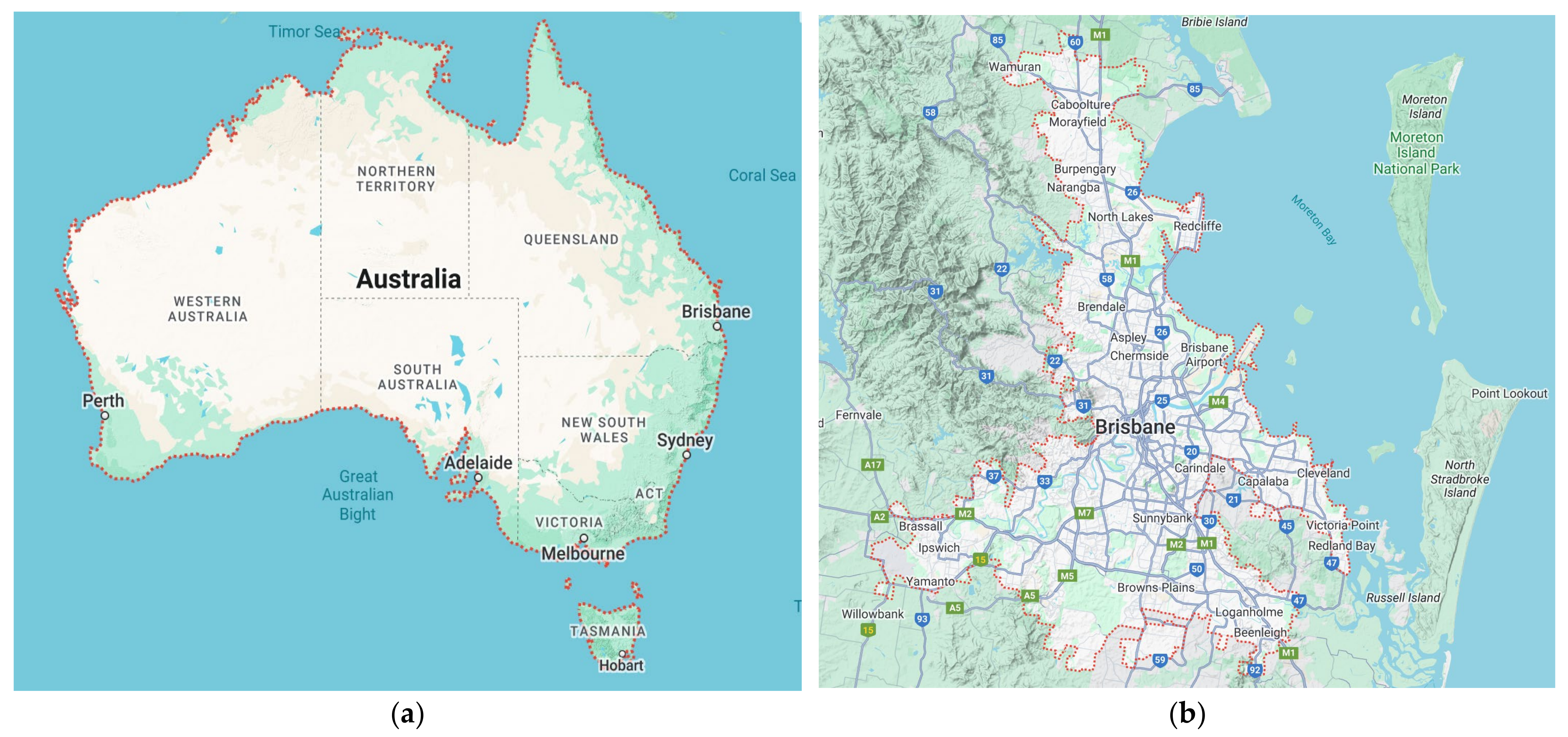
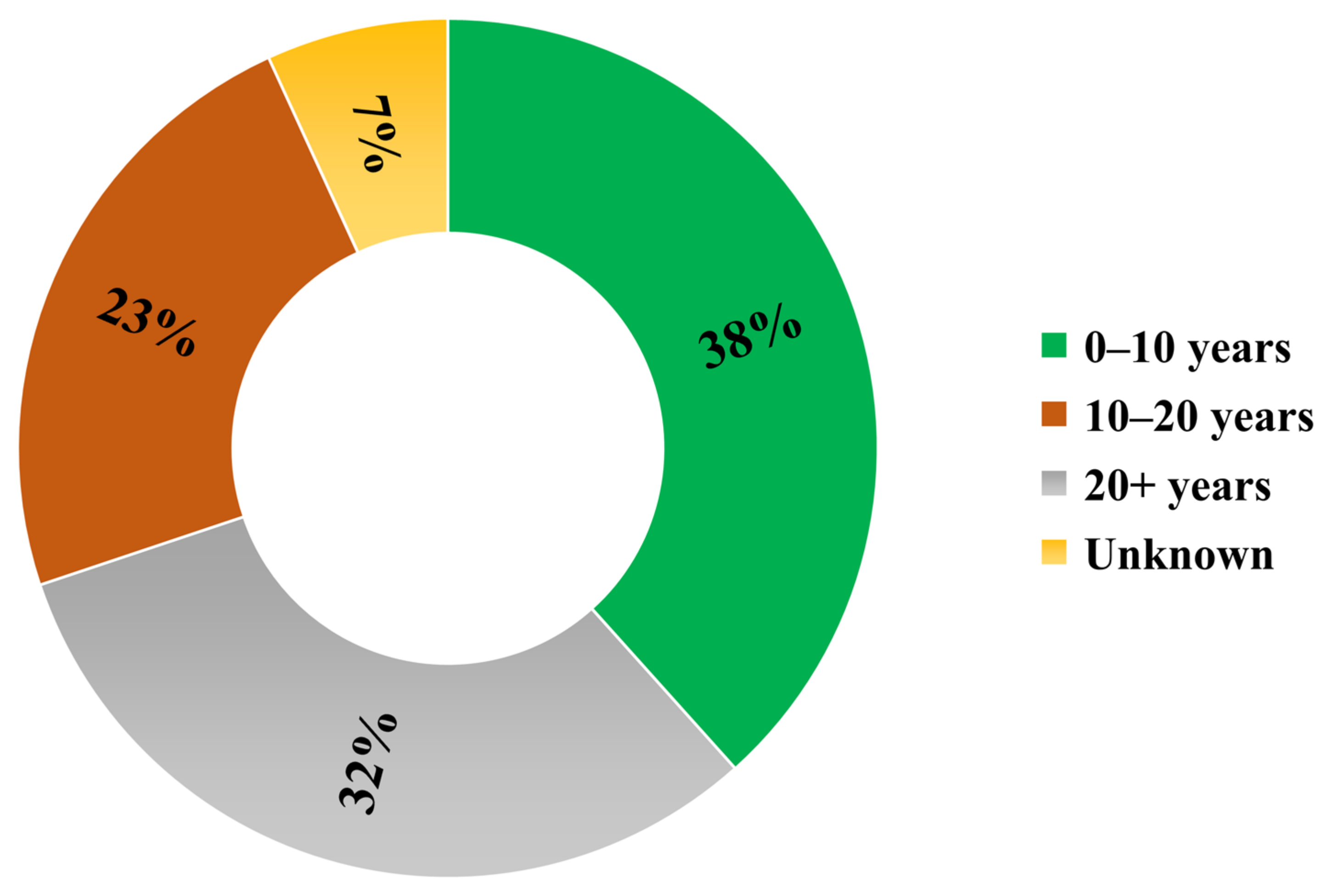
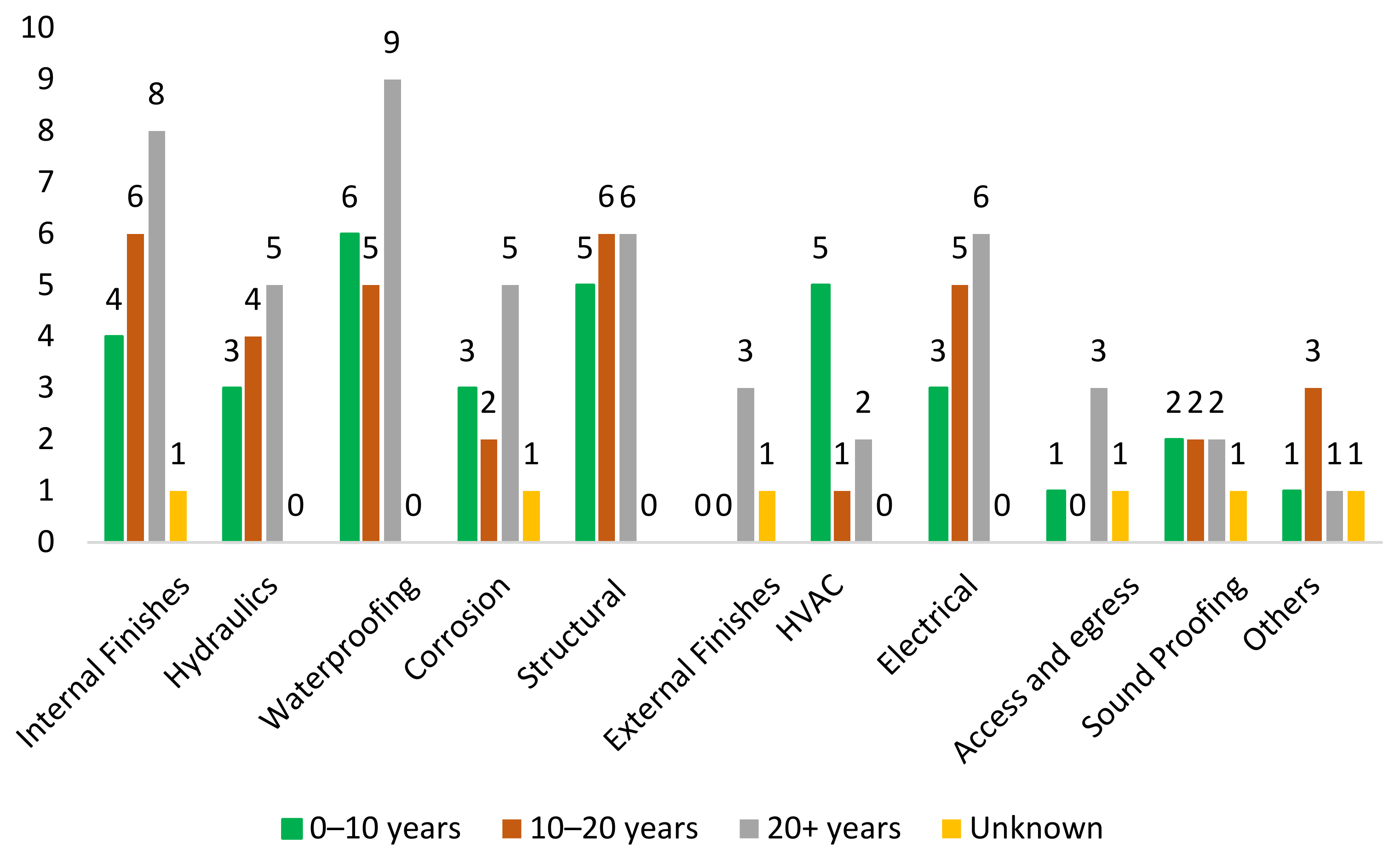
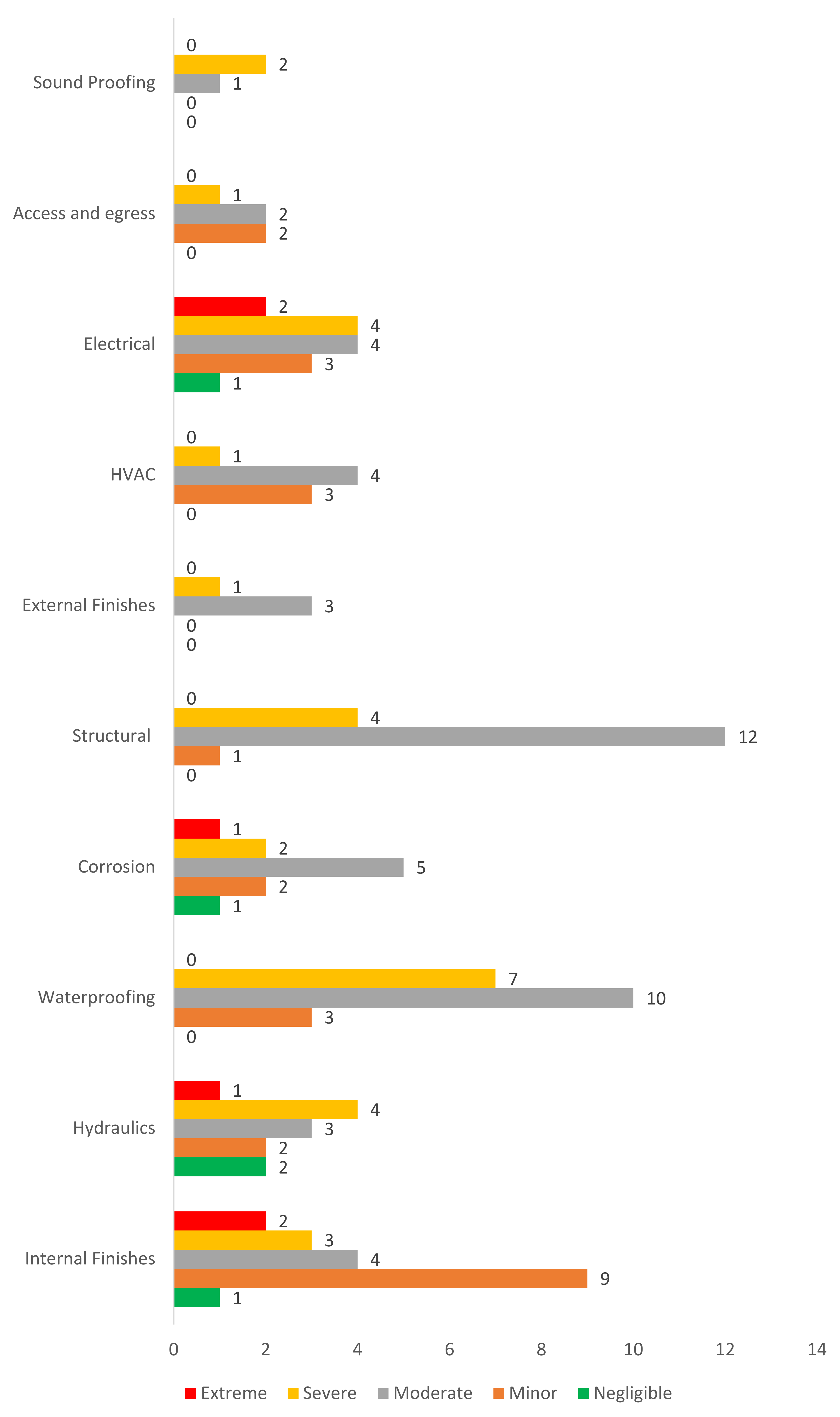
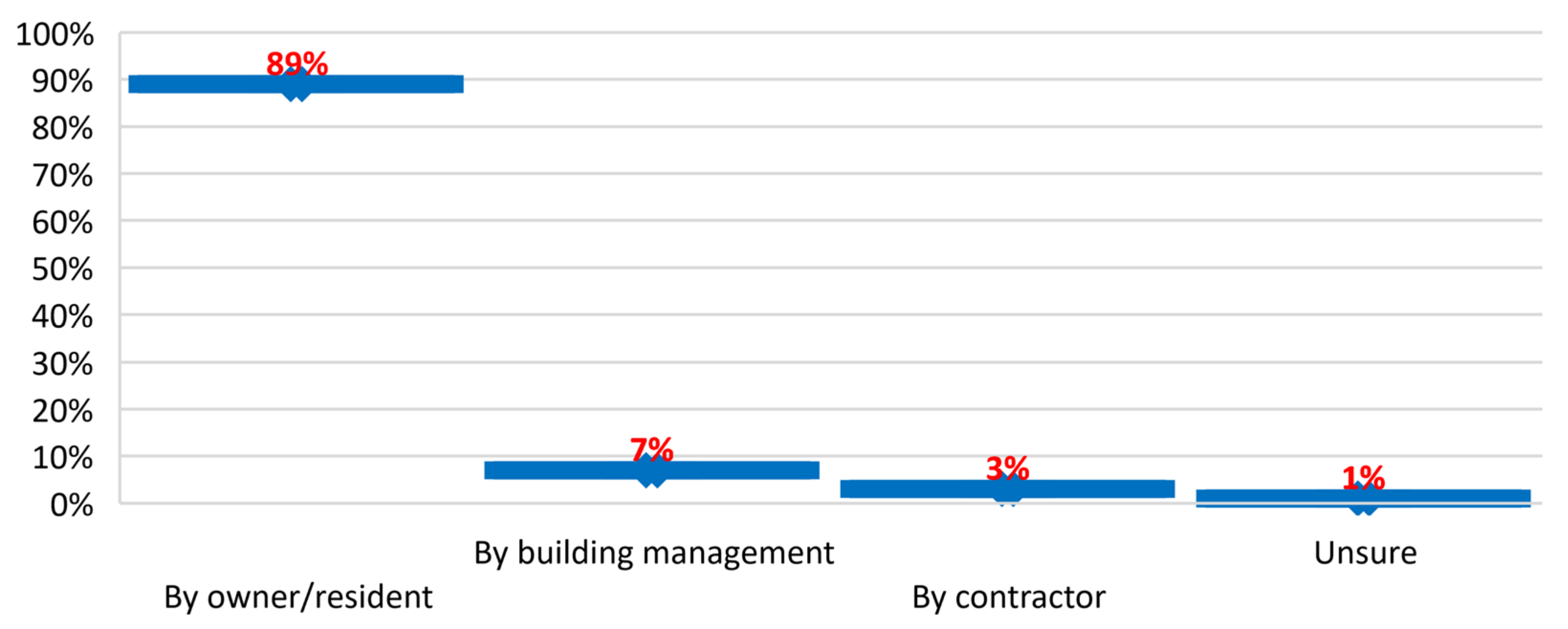
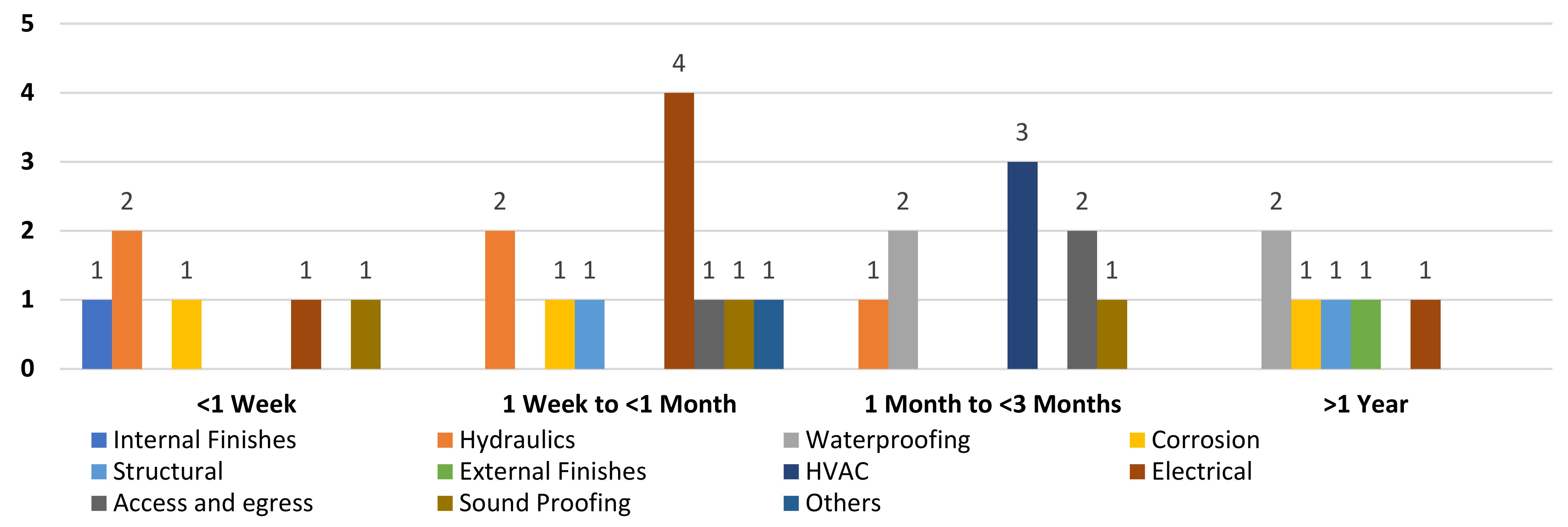
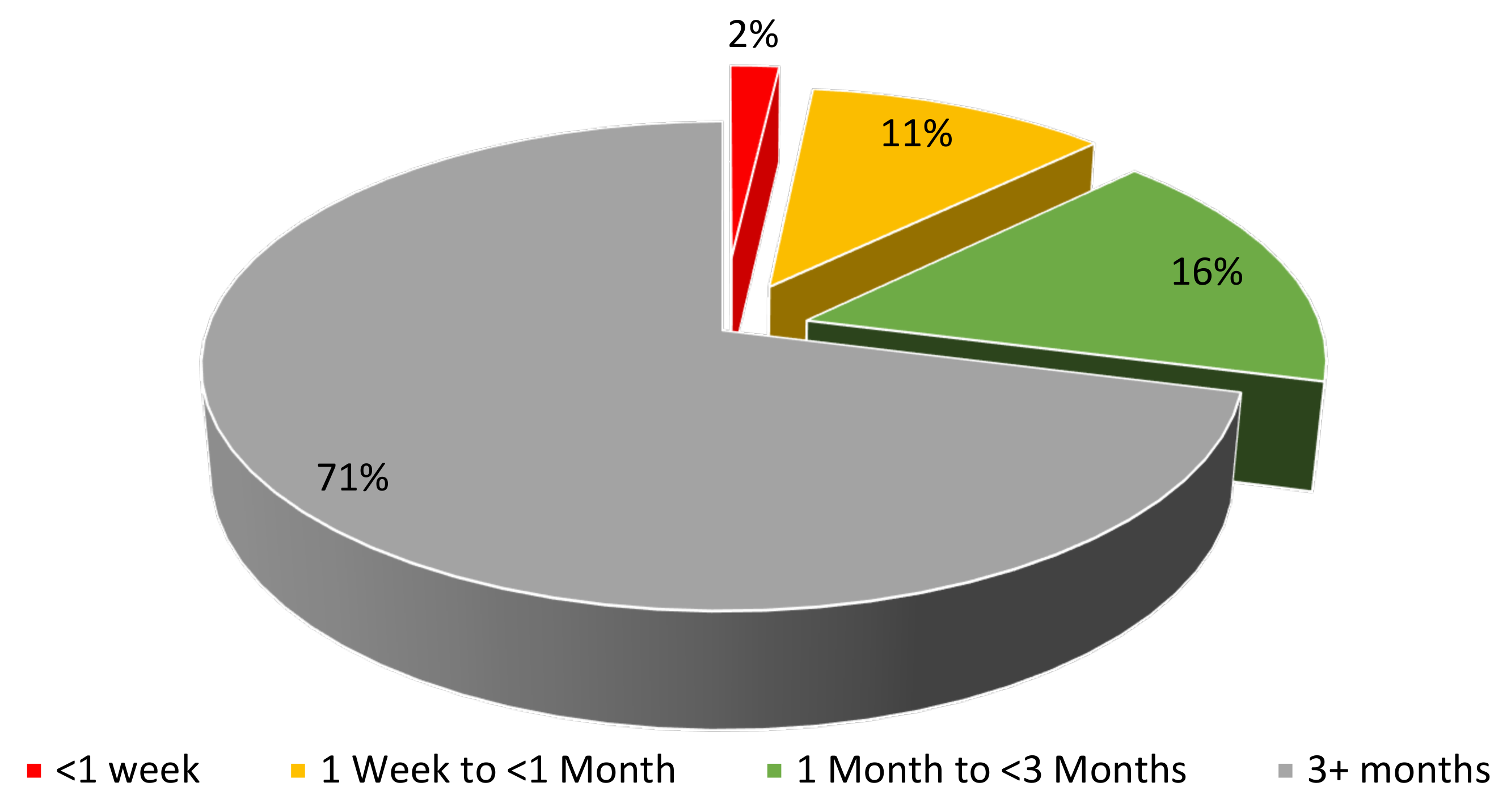
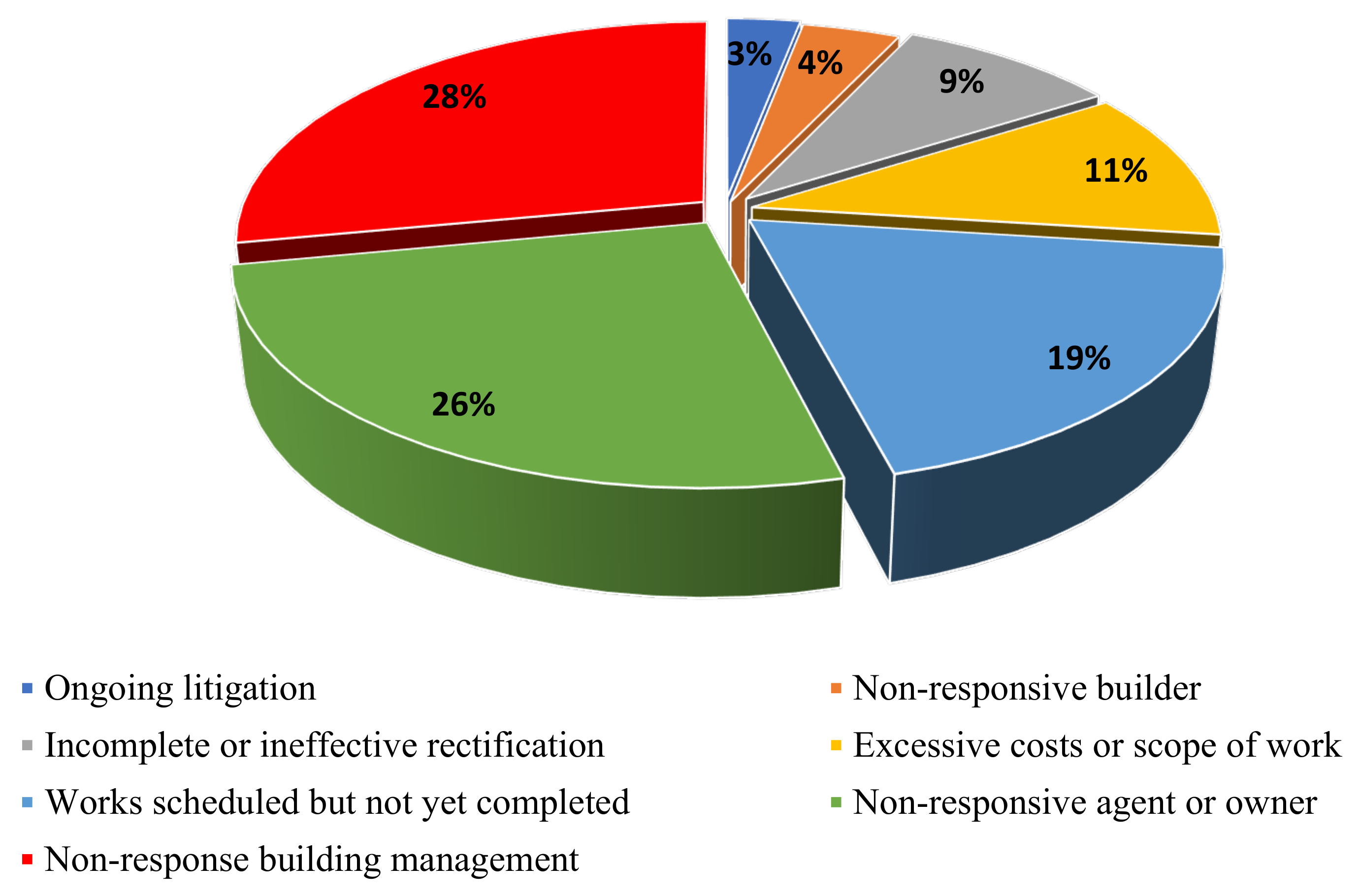
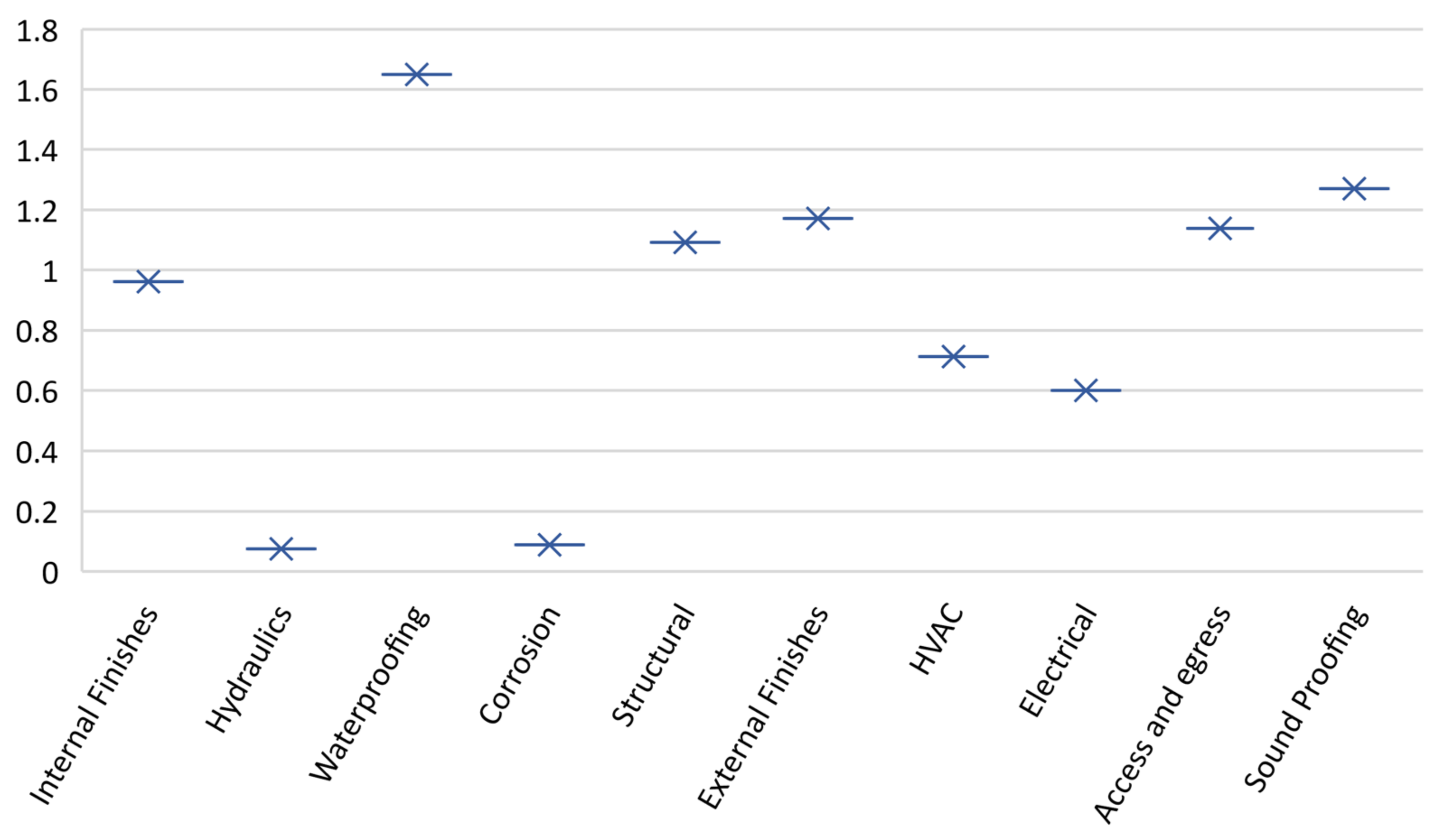
| Causes | [22] | [21] | [33] | [28] | [29] | [10] | [31] | [34] | [24] | [35] | [30] | [32] |
|---|---|---|---|---|---|---|---|---|---|---|---|---|
| Project environment | X | |||||||||||
| Organizational culture | X | |||||||||||
| Commercial Pressures | X | |||||||||||
| Exposure (environmental) | X | X | ||||||||||
| Design and Constructability | X | X | ||||||||||
| Material quality | X | X | ||||||||||
| Motivation | X | X | X | |||||||||
| Management Strategy | X | X | X | |||||||||
| Workmanship | X | X | X | |||||||||
| Time Pressures | X | X | X | |||||||||
| Human error | X | X | X | X | ||||||||
| Limited Information Sharing | X | X | X | X | ||||||||
| Poor Communication | X | X | X | X | X |
| Report Title | Commissioned by | Date | Aims |
|---|---|---|---|
| Non-conforming building products Interim report: Aluminum composite cladding | Australian Federal Government | September 2017 | Investigate non-conforming building products, flammable cladding |
| 2017 Victorian cladding taskforce report | Victorian State Government | November 2017 | Investigate non-conforming cladding products on buildings |
| 2018 Tasmanian Aluminum Composite Panel audit | Tasmanian State Government | January 2018 | Audit of all aluminum composite cladding in Tasmania |
| Building Confidence: Improving the effectiveness of compliance and enforcement systems for the building and construction industry across Australia | Building Ministers’ Forum (BMF) | February 2018 | Compliance and enforcement in construction |
| Queensland Non-Conforming Building Products Audit Taskforce Status Report | Queensland Government | April 2018 | Review potential non-conforming combustible cladding |
| Regulation of building standards, building quality, and building disputes | NSW Government | April 2020 | Flammable cladding, defects response, building certification |
| Research report on serious defects in recently completed strata buildings across New South Wales | NSW Government, Strata Community Association NSW | September 2021 | Review serious defects, buildings >4 stories |
| Section # | Section Title | Questions |
|---|---|---|
| 1 | Overview and Informed Consent | Questionnaire Overview Informed Consent information |
| Do you wish to participate? | ||
| 2 | Apartment Defect Questionnaire—Resident | Do you live in an apartment/unit in a building four stories or higher? |
| Have you identified any defects in the property? | ||
| Please provide the approximate age of the building, if known | ||
| 3 | Defect #1 | Please select the type of defect. |
| How was the defect identified? | ||
| Please describe the severity of the defect. | ||
| Select the impacts the defect has had on you and your occupation of the property. | ||
| Has the defect been fully rectified? | ||
| 4 | Rectified Defect #1 | Approximately how long did the defect take to get rectified? |
| 5 | Unrectified Defect #1 | Have you taken any action regarding the defect? |
| 6 | Reported Defect #1 | Approximately how long ago was the defect reported? |
| What prevented the defect from being rectified? | ||
| 7 | Report Additional Defect? | Would you like to report an additional defect? |
| Number | Questions |
|---|---|
| 1 | Do you believe there is a major issue regarding defects in residential apartments? |
| 2 | What is your involvement in the development of these buildings? |
| 3 | What are the issues you are involved in or aware of that you believe contribute to the creation of defects? |
| 4 | What other factors influence the creation of defects? |
| 5 | What impact do defects have on your company? |
| 6 | What could be done to reduce the frequency or severity of defects observed? |
| Number | Code | Designation | Project Phase |
|---|---|---|---|
| 1 | INT1 | Engineer | Design |
| 2 | INT2 | Estimator | Tendering |
| 3 | INT3 | Consulting Engineer | Various stages |
| 4 | INT4 | Engineer | Design and Construction |
| 5 | INT5 | Consulting Engineer | Design |
| 6 | INT6 | Project Engineer | Construction |
| Type of Impact | Count | Percentage |
|---|---|---|
| Cost | 44 | 29.30% |
| Intended Property Use | 50 | 33.30% |
| Psychological | 50 | 33.30% |
| Health and Safety | 5 | 3.30% |
| Time | 1 | 0.70% |
| Defect Type | Severity Score | Likelihood Score | Total Risk Score |
|---|---|---|---|
| Internal Finishes | 3.48 | 16.25 | 56.55 |
| Hydraulics | 2.40 | 10 | 24 |
| Waterproofing | 4.32 | 25 | 108 |
| Structural | 3.64 | 21.25 | 77.35 |
| External finishes | 0.88 | 2.5 | 2.2 |
| HVAC | 1.44 | 10 | 14.4 |
| Electrical | 3.04 | 7.50 | 22.8 |
| Corrosion | 2.20 | 9.25 | 20.35 |
| Access and egress | 0.92 | 6.25 | 5.75 |
| Soundproofing | 0.76 | 3.75 | 2.85 |
Disclaimer/Publisher’s Note: The statements, opinions and data contained in all publications are solely those of the individual author(s) and contributor(s) and not of MDPI and/or the editor(s). MDPI and/or the editor(s) disclaim responsibility for any injury to people or property resulting from any ideas, methods, instructions or products referred to in the content. |
© 2024 by the authors. Licensee MDPI, Basel, Switzerland. This article is an open access article distributed under the terms and conditions of the Creative Commons Attribution (CC BY) license (https://creativecommons.org/licenses/by/4.0/).
Share and Cite
Denman, M.; Ullah, F.; Qayyum, S.; Olatunji, O. Post-Construction Defects in Multi-Unit Australian Dwellings: An Analysis of the Defect Type, Causes, Risks, and Impacts. Buildings 2024, 14, 231. https://doi.org/10.3390/buildings14010231
Denman M, Ullah F, Qayyum S, Olatunji O. Post-Construction Defects in Multi-Unit Australian Dwellings: An Analysis of the Defect Type, Causes, Risks, and Impacts. Buildings. 2024; 14(1):231. https://doi.org/10.3390/buildings14010231
Chicago/Turabian StyleDenman, Michael, Fahim Ullah, Siddra Qayyum, and Oluwole Olatunji. 2024. "Post-Construction Defects in Multi-Unit Australian Dwellings: An Analysis of the Defect Type, Causes, Risks, and Impacts" Buildings 14, no. 1: 231. https://doi.org/10.3390/buildings14010231
APA StyleDenman, M., Ullah, F., Qayyum, S., & Olatunji, O. (2024). Post-Construction Defects in Multi-Unit Australian Dwellings: An Analysis of the Defect Type, Causes, Risks, and Impacts. Buildings, 14(1), 231. https://doi.org/10.3390/buildings14010231








